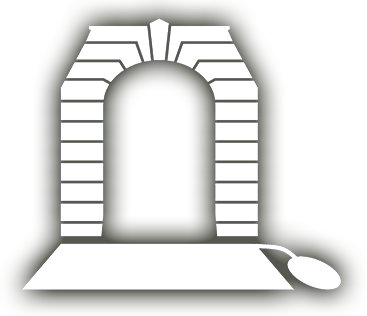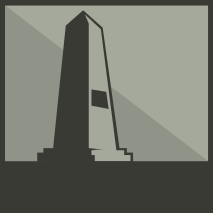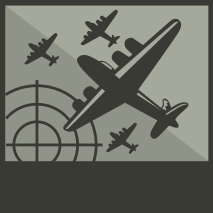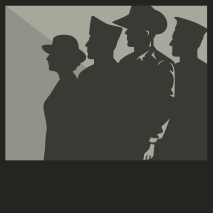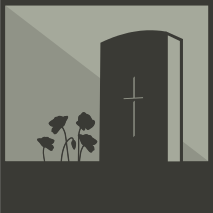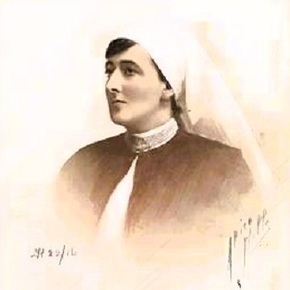
WATSON, Beatrice Middleton
| Service Number: | Staff Nurse |
|---|---|
| Enlisted: | 1 September 1915, Enlisted at Ismailia, Egypt |
| Last Rank: | Staff Nurse |
| Last Unit: | 1st Australian General Hospital |
| Born: | Elsternwick , Victoria, Australia, 1883 |
| Home Town: | Elsternwick, Glen Eira, Victoria |
| Schooling: | Not yet discovered |
| Occupation: | Nurse |
| Died: | Cerebral Hemorrhage, Ismailia, Egypt, 2 June 1916 |
| Cemetery: |
Ismailia War Memorial Cemetery, Egypt Row B, Grave 67 |
| Memorials: | Australian Military Nurses Memorial, Kapunda Dutton Park Memorial Bullwinkel Memorial, Maryborough Nurses Honour Board, Melbourne St. Paul's Cathedral Australian Army Nursing Service Great War Roll of Honour |
World War 1 Service
| 1 Sep 1915: | Enlisted Australian Army Nursing Service (WW1), Staff Nurse, Staff Nurse, 1st Australian General Hospital, Enlisted at Ismailia, Egypt | |
|---|---|---|
| 12 Nov 1915: | Involvement 1st Australian General Hospital, --- :embarkation_roll: roll_number: '23' embarkation_place: Melbourne embarkation_ship: HMAT Orsova embarkation_ship_number: A67 public_note: '' | |
| 12 Nov 1915: | Embarked 1st Australian General Hospital, HMAT Orsova, Melbourne | |
| 2 Jun 1916: | Involvement --- :awm_ww1_roll_of_honour_import: awm_service_number: awm_unit: Australian Army Nursing Service att 1 Australian Stat Hospital awm_rank: Staff Nurse awm_died_date: 1916-06-02 |
Help us honour Beatrice Middleton Watson's service by contributing information, stories, and images so that they can be preserved for future generations.
Add my storyBiography contributed by Faithe Jones
Beatrice Middleton Watson was born on 18 June 1882 at ‘Iona,’ the Watson family home in Caulfield, Melbourne. She was the third of five children born to Jane Ada Willis (1857–1936) and William Galley Watson (1835–1922).
William Watson was born on 19 December 1835 in Tasmania and grew up in Hobart, where his father was a shipwright and later the harbour master. In 1858 William moved to Melbourne and started work as an accountant at Dalgety Gore & Co., which became Dalgety Blackwood & Co. and later Dalgety & Co. He remained with the firm until his retirement.
On 8 January 1862 William married Margaret Alexandrina Cadden in Hobart. Margaret returned to Melbourne with William, and they lived in St. Kilda. They had three children, William Leslie (1862–1938), Lilian Mary (1865–1946) and Ethel Maud, who died an infant of five months in 1867. Tragically, Margaret died on 14 March 1869 at the age of only 29 and was buried at St. Kilda Cemetery.
In time William met Jane Willis and the two were married on 26 May 1877 at St. John’s Church in Corowa, New South Wales. Jane was born in 1857 in Ballarat, Victoria. She was the third daughter of Marian Carver and James Willis, who was Geelong’s first Town Treasurer.
In 1878 Jane and William moved to ‘Waverley’ in Elsternwick, a suburb adjacent to Caulfield, and in October that year their first child, Muriel, was born. Their second child, Louis John, was born in October 1880. Curiously, Muriel’s birth does not seem to have been registered, and Louis’s was not registered until 1881.
By the time Beatrice was born in 1882, the family had moved to ‘Iona’ on Glen Huntly Road in Caulfield. (Following boundary changes, the Watsons’ home later fell within the municipality of Elsternwick.) Another daughter, Ada, was born in 1883 but died three days later. The family’s last child, Guy Willis, was born in December 1885 (and registered the following year).
Meanwhile, William’s career was progressing nicely, and in 1884 he had become chief of staff in Dalgety & Co.’s Melbourne office.
In the 1890s Beatrice and Muriel attended Caulfield High School for Girls (also known as Caulfield Ladies’ College), a private school established at ‘Orwell,’ 235 Kooyong Road, Caulfield under Miss Ina Sadleir. In 1895 Beatrice was in Class III and Muriel in Class I. At the school’s annual prizegiving day at the end of that year, Beatrice was awarded prizes for Highest Lesson Marks and Needlework.
NURSING
Like many young middle-class women – and perhaps inspired by her half-sister, Lilian, who was matron of the Girls’ Training Home on Berry Street in East Melbourne – Beatrice chose a career in nursing. In 1906 she commenced as a probationer at the Melbourne Children’s Hospital in Carlton. She completed her training and was awarded her certificate in general nursing in October 1908.
In 1909 Beatrice undertook training in infectious nursing at the Queen’s Memorial Infectious Diseases Hospital in Fairfield, commonly known as the ‘Fever Hospital.’ She gained her certificate and in February 1910 was temporarily appointed matron of Colac Hospital, in Victoria’s Western District. In Colac Beatrice was reunited with her half-brother, William, who managed the Colac Dairying Company. In July Muriel came to visit for three weeks.
Sometime after the end of her appointment at Colac, Beatrice relocated to Western Australia and took up a position as sister in charge of the surgical ward at Perth General Hospital. Meanwhile, in September 1912 she became a registered member of the Royal Victorian Trained Nurses’ Association.
By early 1914 Beatrice had returned to Victoria from Perth and was living in Coleraine in the far west of the state. In April that year she applied to Wannon Shire Council for the registration of premises on the corner of Gage and McKebery Streets in Coleraine for use as a private hospital. By late May Beatrice's hospital had opened.
Beatrice ran her hospital for 11 months before leaving Coleraine in April 1915 to return to Melbourne, where she stayed with her parents at ‘Iona’ in Elsternwick. By then war had broken out in Europe. An expeditionary force of 20,000 men – the first contingent of what became known as the Australian Imperial Force (AIF) – was being mobilised for service, and with them would travel a group of 25 nurses of the Australian Army Nursing Service (AANS). The force departed Fremantle on 1 November 1914, at that stage bound for England, but destined to disembark in Egypt and to fight in the Gallipoli campaign.
Soon hundreds more Australian nurses were seeking to join the AANS. Beatrice was one of them. She now had nine years’ nursing experience under her belt and was an ideal candidate.
ENLISTMENT AND EMBARKATION
On 26 August 1915 Melbourne’s Table Talk newspaper reported that Beatrice had been appointed to the AANS and would shortly leave Melbourne. She completed her AANS Candidates’ Enrolment Form on 7 October and was attached as a reinforcement staff nurse to the 1st Australian General Hospital (AGH), a medical unit of the Australian Imperial Force (AIF) that was at that time deployed in Egypt. Soon she would be sailing to the Land of the Pharaohs.
On 12 November Beatrice and 37 other 1st AGH reinforcement staff nurses travelled to Port Melbourne and embarked on His Majesty’s Australian Troopship Orsova alongside hundreds of AIF reinforcement troops. They were bound for Egypt. The ship had departed Sydney two days earlier with nine staff nurses and two masseuses (physiotherapists) of the 1st AGH on board, as well as reinforcement staff nurses of the 2nd AGH, and many hundreds of troops. Eight more 1st AGH staff nurses joined the Orsova in Fremantle on 18 November.
One of Beatrice’s 1st AGH colleagues on board the Orsova, Staff Nurse Victoria Drewett, recalled in an interview with Matron Maud Kellett conducted in 1919 that as there were so many nurses on board the ship and so little sickness, those who were supposed to be on duty, like herself, had no need to be. Other nurses on board subsequently made the same observation or stated that, at most, there was very little duty required.
HELIOPOLIS, EGYPT
On 9 December 1915, after sailing via Aden (and perhaps also Colombo and Bombay), the Orsova arrived at Post Tewfik, the port of Suez, in Egypt. The reinforcement nurses of the 1st and 2nd AGHs disembarked and entrained for Cairo. Around 10 hours later they were met at Cairo station, and Beatrice and the other 1st AGH nurses were transported to Heliopolis, a new garden suburb on the city’s northeastern outskirts, where their unit was based.
The 1st and 2nd AGHs had both arrived in Egypt in January 1915 on HMAT Kyarra. The 1st AGH had established its hospital in the luxurious Heliopolis Palace Hotel, while the 2nd AGH had taken over Mena House, a similarly luxurious hotel situated close to the Pyramids of Giza on the southwestern fringes of Cairo. Both hospitals had reacted quickly to the huge numbers of casualties flowing into Egypt following the opening of the Gallipoli campaign. The 2nd AGH had moved into the Ghezireh Palace Hotel in central Cairo while maintaining Mena House as an overflow hospital. The 1st AGH, for its part, had progressively taken over buildings in the vicinity of the Heliopolis Palace Hotel and converted them into auxiliary hospitals. In time, the auxiliary hospitals, of which there were four so named, as well as a venereal hospital and an infectious hospital, became more or less independent but remained staffed through the 1st AGH.
After their arrival in Heliopolis, the 1st AGH nurses were taken to their billets (possibly Gordon House, near the Heliopolis Palace Hotel) and spent the next day or two getting used to their new surroundings. They were then detailed for duty at the various auxiliary hospitals. On 12 December Beatrice, along with Victoria Drewett, Staff Nurse Helen Milne, and others, reported for duty at the 2nd Auxiliary Convalescent Depot (ACD).
The 2nd ACD had opened on 10 June as the 400-bed 2nd Auxiliary Hospital in a building known as the Atelier. As its name suggests, the hospital was the second of the 1st AGH’s auxiliary hospital to open (after Luna Park). The failure of a new offensive in August marked the end of intensive fighting on the Gallipoli Peninsula, and the focus of the hospital turned to convalescence.
In her interview with Matron Kellett, Victoria Drewett described her experience at the 2nd ACD. “The Atelier was a large shed,” she said, “which had previously been a furniture depository and held about 800 beds. We took in all kinds of patients, surgical and medical. The flies, dust and heat proved a great nuisance, and we suffered much discomfort from them. The hospital was very well equipped, and the food was good. There were not many amusements, and of what there were, the patients made themselves.”
CHRISTMAS AT THE 2ND AUXILIARY CONVALESCENT DEPOT
Less than two weeks after Beatrice’s arrival at Heliopolis, it was Christmas Day. Her colleague Corporal Norman S. Trevena of the Sanitary Section, writing to his parents in Bendigo, Victoria, described how the day was celebrated, as printed on 17 February 1916 in the Bendigonian.
“The festivities at No. 2. Auxiliary Convalescent Depot of the 1st A.G.H.,” wrote Corp. Trevena, “commenced at 6.15 a.m., when, in accordance with a time-honoured custom, the hospital staff paraded to receive the season’s greetings from the officer in charge, Major James Ramsay Webb. After this it was ‘coats off’ and everybody into the wards to prepare for the day’s enjoyment. The wards had been prettily and extensively decorated by the patients and staff with flags, coloured lights, greenery, etc., provided by the various Australian societies, and by well-wishing residents of Heliopolis and Cairo. At 10.00 am the Red Cross helpers distributed gifts to all the patients, boxes from the Australian Comforts Fund, and ‘billies’ to the staff. Then there were great doings, as crackers were snapping all over the building, and loud shrieks of laughter proclaimed the enjoyment of the patients as they decked themselves out in paper hats, and beheld the sisters and officers trying to look dignified as they paraded the wards, decked out in coloured paper hats and fancy trimmings. The fun reached its climax when they beheld a strange procession passing through the wards, no less a sight than a string of about 10 donkeys, each with its attendant donkey-boy, and mounted by officers, sisters, and N.C.Os.
“The next item was dinner, provided by the contractors. The patients were tempted by such viands as roast turkey and plum pudding. They finished by giving three Australian cheers for the providers, and then sang a purely typical Australian song. At 3.30 p.m. we were all treated to a fine concert given by prominent performers from the military camp, and from the residents of Cairo. The items covered a wide range, as we had such entertainment as a display of hypnotic influence, and some fine reciting and singing. The N.C.Os. celebrated the occasion by spending some of their carefully saved up ‘piastres’ in procuring from the Continental Hotel, Cairo, a fine dinner, to which they had invited the O.C. and his officers. The manner in which this dinner was conducted was good evidence of the spirit of good fellowship which exists between the officers and staff, enabling the work of this model hospital to proceed with the minimum amount of friction.”
Six weeks after Christmas, Beatrice was transferred to the 1st Australian Stationary Hospital (ASH) in Ismailia, a town situated on the west bank of the Suez Canal midway between Suez and Port Said.
1ST AUSTRALIAN STATIONARY HOSPITAL, ISMAILIA
Following the final Allied evacuation of the Gallipoli Peninsula in January 1916, tens of thousands of Turkish soldiers had become freed up, and an attack on Egypt from Ottoman Palestine was expected. Additional Allied troops were deployed to bolster the line of defence on the Suez Canal, and AIF camps were established near the town of Ismailia. AIF medical units came with them. The 2nd ASH, having arrived directly from Lemnos (a Greek island lying close enough to the Gallipoli Peninsula to have become a vital logistical and medical base for the Allies), opened on 28 January at Tel el Kebir, 50 kilometres to the west of Ismailia. The 1st ASH, which in November 1915 had relocated from Lemnos to the Gallipoli Peninsula, opened in Ismailia on 1 February.
On 5 February Beatrice reported for duty. The 1st AGH was housed in a former French convent and situated in a picturesque spot between the edge of the desert and the outskirts of Ismailia. The nurses were comfortably billetted in four large houses and were well looked after. Their food, which was supplemented by the Red Cross, was good, and they had access to various sporting facilities, including boating, bathing and tennis. They were extremely happy there.
Matron Jean Miles Walker from Tasmania was in charge of the nurses. She was one of the 25 AANS nurses who had travelled with the first expeditionary force to Egypt and was well liked and respected by her staff.
Beatrice and her colleagues were responsible for looking after the thousands of AIF troops camped nearby. As the troops were not at that time engaged in combat – and by and large would not be until the Battle of Romani in August – the cases were mainly medical, including those with influenza, dysentery and enteric (typhoid), and the beds were nearly always full.
On 28 February Beatrice herself was admitted to the 1st ASH with influenza.
Three months later, on 1 June, Beatrice was admitted to the 1st ASH again. She was dangerously ill. The following day at 5.55 pm she died of cerebral haemorrhage.
Beatrice was buried on 3 June at the Ismailia Cemetery.
IN MEMORIAM
On 2 June 1923 a tablet in memory of Beatrice was unveiled at the Nurses’ Home, Melbourne Children’s Hospital. Among the many former trainees of the hospital who attended the unveiling ceremony was Evelyn Conyers, matron-in-chief of the AANS in England, France and Egypt during the war.
Beatrice is memorialised at the Australian War Memorial in Canberra. Her name will be projected onto the exterior of the Hall of Memory on 8 July 2025 at 2.46 am.
Biography contributed by Carol Foster
Daughter of William Galley Watson and Jane Ada Watson of 'Middleton' Kooyong Road, Elsternwick, Victoria
Jesus said unto to her I am the resurrection and the Life. John 11. 25
Medals: 1914-15 Star, British War Medal, Victory Medal
Did her 3 year nursing training at the Melbourne Children's Hospital
DEATH OF SISTER WATSON
News has been received of the death in Egypt on the 2nd June from Cerebral Hemorrhage of Staff Nurse Beatrice M Watson, daughter of Mr.W.G. Watson, late of Iona, Elsternwick, and formerly of Dalgety & Co. Ltd. of Melbourne. Miss Watson previous to her departure for England in November last, conducted a private hospital, McKebery Street Coleraine, where she became justly popular with her patients and friends. She came here from the Perth General Hospital where she had been in charge of the surgical ward.
WATSON.—On the 2nd June, at 1 Australian General Hospital, Ismailia, Egypt, Beatrice Middleton Watson, staff nurse, and dearly loved youngest daughter of William G. and Ada Watson, late of "Iona," Glen Huntly road, Elsternwick, Victoria, now at lona, Walbundrie, New South Wales. (By cable.)

